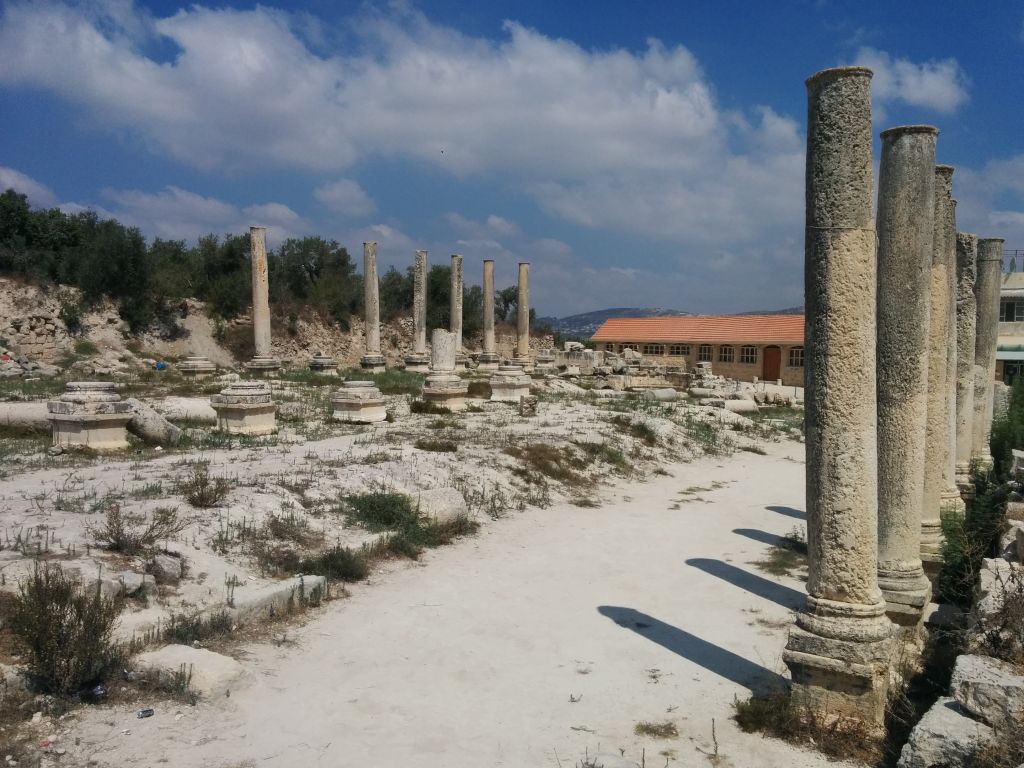
Israelis visit the site of the ancient village of Sebastia near the West Bank city of Nablus, on April 22, 2019, during the Jewish holiday of Sukkot. (Hillel Maeir/Flash90)
Posted on 05/08/2023 6:52:20 AM PDT by SJackson

Israelis visit the site of the ancient village of Sebastia near the West Bank city of Nablus, on April 22, 2019, during the Jewish holiday of Sukkot. (Hillel Maeir/Flash90)
Funds to go toward development of Sebastia archaeological park near Nablus, with remains from 10 different periods, over which Israelis and Palestinians have fought for years
The government approved a budget of NIS 32 million ($8.8 million) on Sunday for the restoration and development of the Sebastia archaeological site near the West Bank city of Nablus, a largely neglected historical site over which Israelis and Palestinians have been wrangling for decades.
The proposal was submitted by Environmental Protection Minister Idit Silman, Tourism Minister Haim Katz, and Heritage Minister Amichai Eliyahu, who argue that the Palestinian Authority, which oversees some areas in the West Bank, is trying to take control of the site illegally, according to a report in the Haaretz daily. In their proposal, they wrote that the Palestinian Authority recently “declared Sebastia a Palestinian heritage site and promotes illegal and destructive activity in the area with the aim of taking over the place,” while “severely damaging the antiquities at the site.”
Sebastia is situated a few kilometers northwest of Nablus in the northern West Bank. Known in Hebrew by its biblical name Shomron, the site is thought to have been the capital of the northern Israelite kingdom in the 9th and 8th centuries BCE, founded by the sixth Israelite king, Omri.
Into the Land: A Tale of Two Cities
Pause
Unmute
Picture-in-Picture
Fullscreen
Close Both Israelis and Palestinians lay claim to the site as their exclusive cultural heritage but it has lain mainly underdeveloped and unexcavated. Israel controls the archaeological park containing the ancient finds, which is in Area C, but the town of Sebastia is in Area B, under joint Israeli and Palestinian control. Its municipality is headed by Palestinian officials who say they want to administer the park, but lack the resources to develop it.
The Israeli government’s approved funding, drawn from eight ministries including tourism; environmental protection; culture and sports; and innovation, science and technology, will go toward establishing a tourism center at the site, building new access roads, mapping untouched areas, and increasing law enforcement to prevent illegal activity, according to Hebrew media reports.

Remains of the Roman basilica at Sebastia in the West Bank, August 2015. (Ilan Ben Zion)
According to the proposal, Israel’s Nature and Parks Authority will have 60 days to formulate a comprehensive plan to restore and develop the site.
Sebastia’s tel features remains from 10 periods, from the Iron Age to modern times. Its overlapping layers of history date back nearly 3,000 years, from biblical kings to Roman conquerors, Crusaders and Ottomans.
Fragments of houses, walls and a palace from the Iron Age remain.
After its destruction by the Assyrians in 721 BCE, the city became the provincial capital of the conquered region. Under the Greeks it again flourished, but was destroyed by Hasmonean ruler John Hyrcanus. Then his son Alexander Jannaeaus rebuilt the city and repopulated it with Jews.
King Omri (Amri). (Image via Guillaume Rouille – Promptuarii Iconum Insigniorum, Public Domain, Wikimedia
During the Roman era, King Herod renamed it after Augustus Caesar — Sebaste is Augustus in Greek. At its height, Sebastia was a major city and entrepôt; the remains of its Roman theater, temple, palaces, forum, hippodrome and marketplace are still visible today.
In the centuries of its long decline, Sebastia was a major Christian site, as underlined by the ruins of a Byzantine church dedicated to St. John the Baptist, where legend says he was executed and his head interred. A Crusader cathedral-turned-mosque still stands in the nearby modern Palestinian village, a vestige of the Crusader city’s former glory that shares the same name.
Sebastia also features prominently in the history of archaeology. The first wholly American archaeological excavation in Ottoman Palestine was conducted at Sebastia by a team sponsored by Harvard in 1908.
But despite its historical significance, the site has barely been excavated. The last archaeological dig took place in 1967, when the West Bank was still under Jordanian control. Since then only salvage operations have taken place.
Visits to the site by Israeli tourists are restricted.
This is a test to see who reads only the headline.
$8 million is enough for an info center.
The main problem with most Arabs in the West Bank is not that they want to protect ancient “Arab” heritage, but they want to extinguish all that is not “Muslim” heritage, even though Islam is a “Johnny come lately” to the area.
Ha
Thanks SJackson.
Disclaimer: Opinions posted on Free Republic are those of the individual posters and do not necessarily represent the opinion of Free Republic or its management. All materials posted herein are protected by copyright law and the exemption for fair use of copyrighted works.